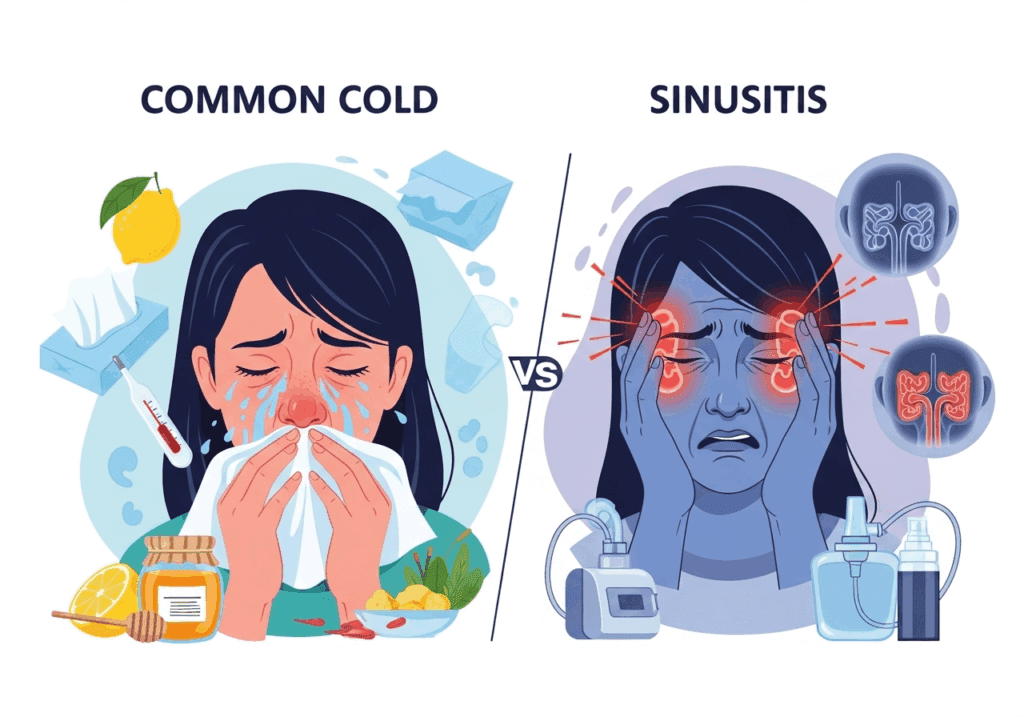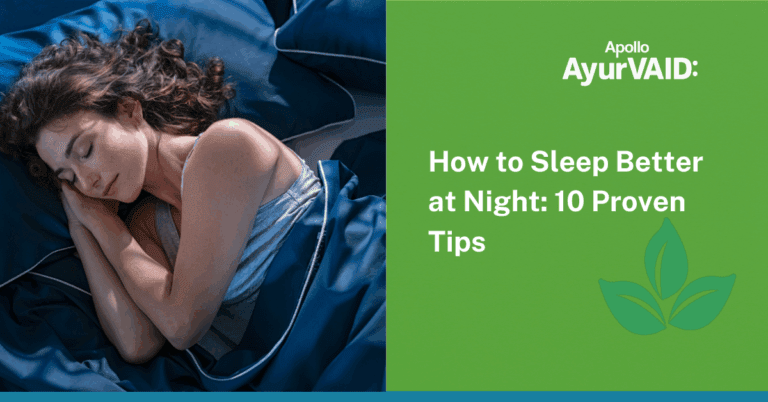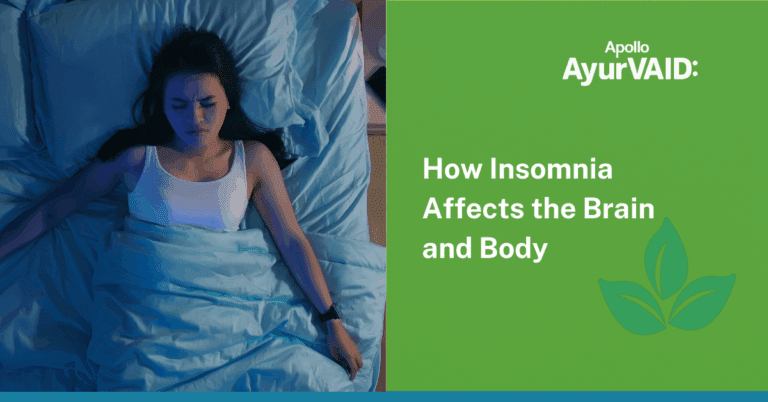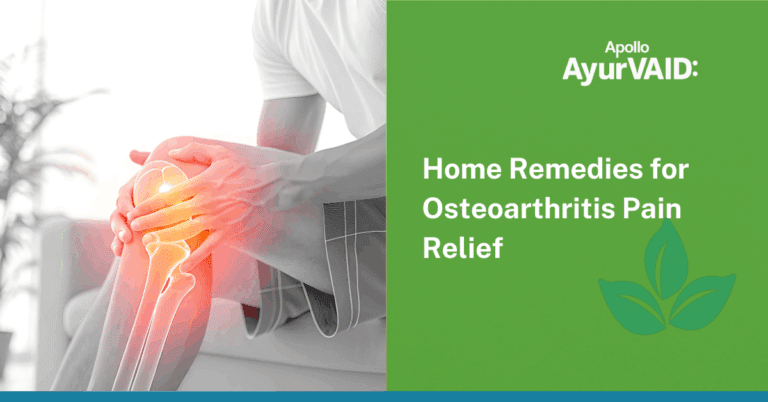Introduction
The usual attack of sneezes, running or blocked nose, persistent cough, and that general sense of being under the weather tends to prompt us to assume, “It’s just a cold.” Occasionally, though, these symptoms persist or become more pronounced, suggesting something more serious condition such as sinusitis. Grasping the difference between cold and sinus infection (medically termed as sinusitis) is essential to manage these effectively, and Ayurveda provides a comprehensive guide to navigate through these conditions efficiently. While contemporary medicine aims at alleviating symptoms, Ayurveda prioritises identifying unique stages and treating underlying imbalances in the body. Let’s discuss sinus cold symptoms and sinus infection vs cold in this blog.
The Common Cold: An Ayurveda Perspective on Pratishyaya
The common cold is a viral infection, most commonly caused by rhinoviruses, of the upper respiratory tract, involving the nose, throat, and sinuses. Its symptoms, such as a runny or stuffy nose, a sore throat, cough, sneezing, mild headache, and occasional low-grade fever, generally appear insidiously and last 7 to 10 days. Supportive treatment is usually administered, which includes rest, fluids, and medicines for relief of symptoms.
In Ayurveda, the common cold has usually been associated with Pratishyaya, a major nasal disease (Nasa Roga). Ayurveda texts define it as an imbalance of Vata and Kapha doshas at the nose, leading to secretions. The symptoms tend to include heaviness of the head (Shirogurutvam), frequent sneezing (Kshvathu pravatanam), body ache (Angamarda), cough, watery or thin nasal discharge (Jalabhsrava, Tanusrava pravartini), and blockage of the nose (Ghranauparodha). The Vataja Pratishyaya with watery nasal discharge and sneezing is specifically similar to the contemporary understanding of the common cold. The first phase usually goes along well with self-care and Ayurveda treatment meant for balancing doshas.
Ayurveda utilises several herbs to treat sinus cold symptoms. Ginger is praised for its antitussive (Kaphahara) and appetite-stimulating (Dipana) qualities, reducing cough and flatulence. Turmeric (Haridra), which possesses anti-inflammatory qualities, treats conditions such as asthma and cough. Peppermint, with the qualities of appetite-stimulating (Dipana), antitussive (Kaphahara), and analgesic qualities, is utilised for chronic fever and pain and leaves a cooling sensation in the nose.

Sinusitis: A Deeper Ayurveda Look into Apeenasa/Peenasa
Once Pratishyaya or a common cold is left untreated or improperly treated, it may develop into a more chronic and more serious condition, which Ayurveda commonly attributes to Apeenasa, Peenasa, or Dusta Pratishyaya.
Sinusitis refers to inflammation of the mucosa lining the paranasal sinuses. It is usually caused by viral infections, but may become complicated by bacterial infections or may be due to allergy or other irritation.
Ayurveda Pathogenesis of Sinusitis (Peenasa)
Causing factors are:
- Excessive consumption of cold substances
- Exposure to cold climatic conditions
- Inhalation of fumes or gases
- Consumption of cold water following exposure to heat
- Extremes of climatic conditions
- Suppression of natural impulses
- Exposure to dust and pollutants
These etiological factors cause
- Increase in Kapha and Vata
- Obstruction and vitiating of Pranavaha and Rasavaha Srotas (respiratory and circulatory channels)
- Deterioration of Jatharagni (digestive fire)
- Appearance of nasal obstruction and sinusitis
Sinus Cold Symptoms in Apeenasa (Ayurveda Perspective)
- Shirashoola – severe headache
- Facial pain/pressure – near cheeks, forehead, or eyes
- Ghranauparodha – recurring nasal obstruction
- Thick or yellow nasal discharge (potentially purulent)
- Gandhanasha – diminished or lost sense of smell
- Kapha predominance – whitish, thick discharge
- Vata predominance – thin discharge with mouth dryness
- Swelling of the eyes
- Noisy and itchy breathing
- Fever
Clinical Note: Apeenasa is a Vatakaphaja Krichasadhya Vyadhi – a hard-to-cure disease of Vata and Kapha.
The sinus cold symptoms associated with Apeenasa are more pronounced and persistent than those of a common cold.
Key Differences
| Attributes | Common Cold (Pratishyaya) | Sinusitis (Apeenasa / Peenasa) |
|---|---|---|
| Cause | Predominantly viral infections (e.g., rhinovirus, coronavirus). | Often develops as a complication of a cold; may be bacterial or allergic in origin. |
| Ayurveda Cause | Mainly Kapha aggravation in the upper respiratory channels. | Vata–Kapha aggravation, blockage of respiratory channels and impaired Agni (digestive fire). |
| Progression & Duration | Milder, self-limiting; resolves in 7–10 days. | More advanced, inflammatory; persists >10 days, may last up to 12 weeks (acute rhinosinusitis); can become chronic. |
| Affected Area | Nasal passages and throat. | Deeper paranasal sinuses (frontal, maxillary, ethmoid, sphenoid). |
| Nasal Discharge | Thin, watery, clear discharge. | Thick, whitish, yellowish, or purulent discharge (Kapha predominance → thick; Vata predominance → thin/dry). |
| Pain | Mild headache or heaviness. | Intense, localised facial pain & pressure (forehead, cheeks, between eyes). |
| Smell/Taste (Gandhanasha) | Usually normal; temporary dullness may occur. | Marked loss/reduction of smell or taste, persistent and pronounced. |
| Other Symptoms | Sneezing, mild throat irritation, fatigue, and mild fever. | Eye swelling, itching, noisy breathing, fever; complications if untreated. |
| Severity | Generally mild, self-limiting. | More severe, neglected cases can cause deafness, anosmia, and severe eye diseases. |
| Prognosis (Ayurveda) | Easier to manage, usually curable with Kapha-pacifying care. | Classified as Vatakaphaja Krichasadhya Vyadhi (difficult to cure). |
| Ayurveda Treatment | Kapha-pacifying diet and lifestyle; light, warm foods; supportive herbal remedies. | Advanced cleansing therapies: Deepana–Pachana (stimulate Agni), Vamana (emesis), Virechana (purgation), Dhumapana (medicated smoke), and especially Nasya Karma (nasal instillation of medicines) – considered the best therapy. |






